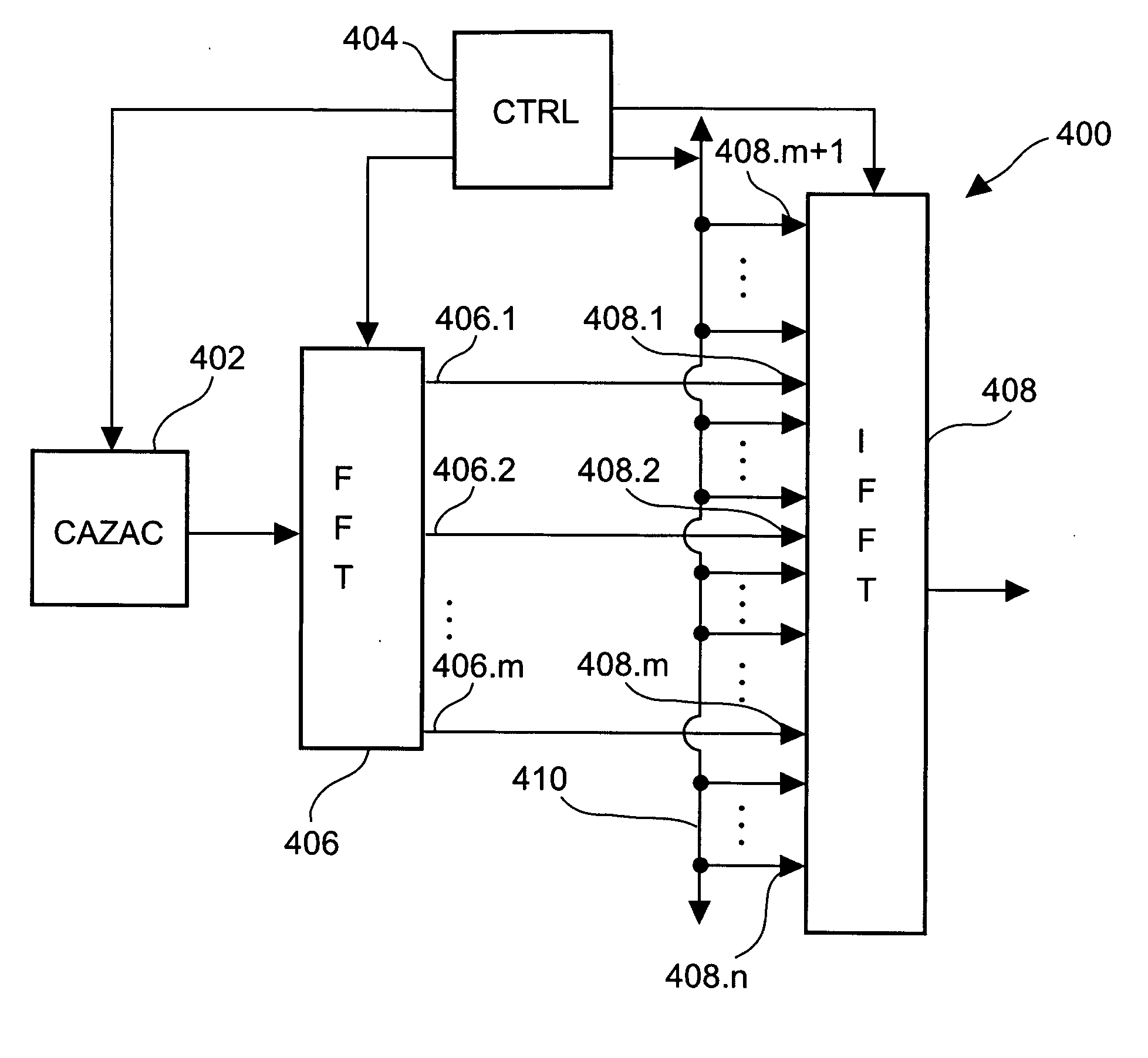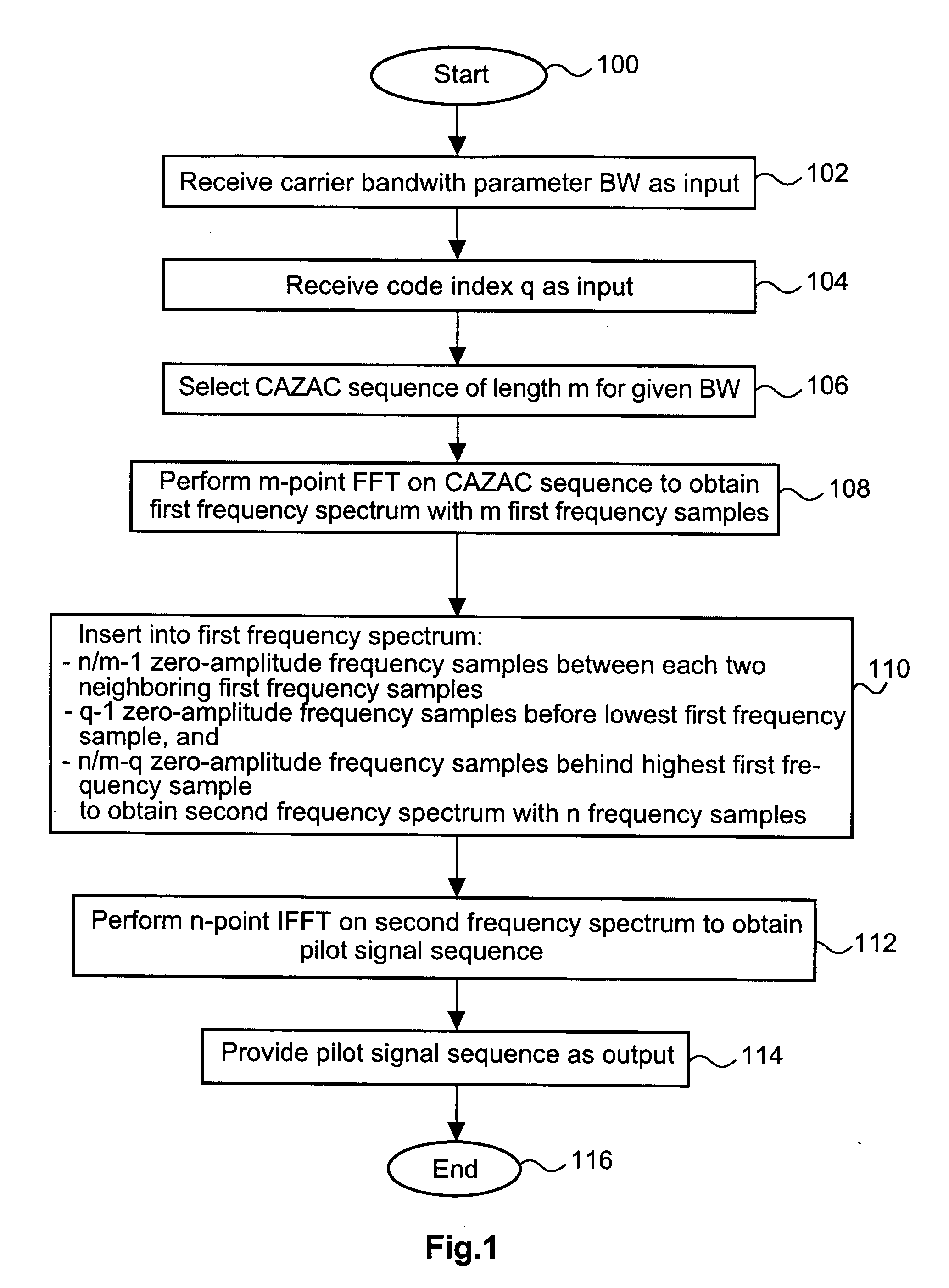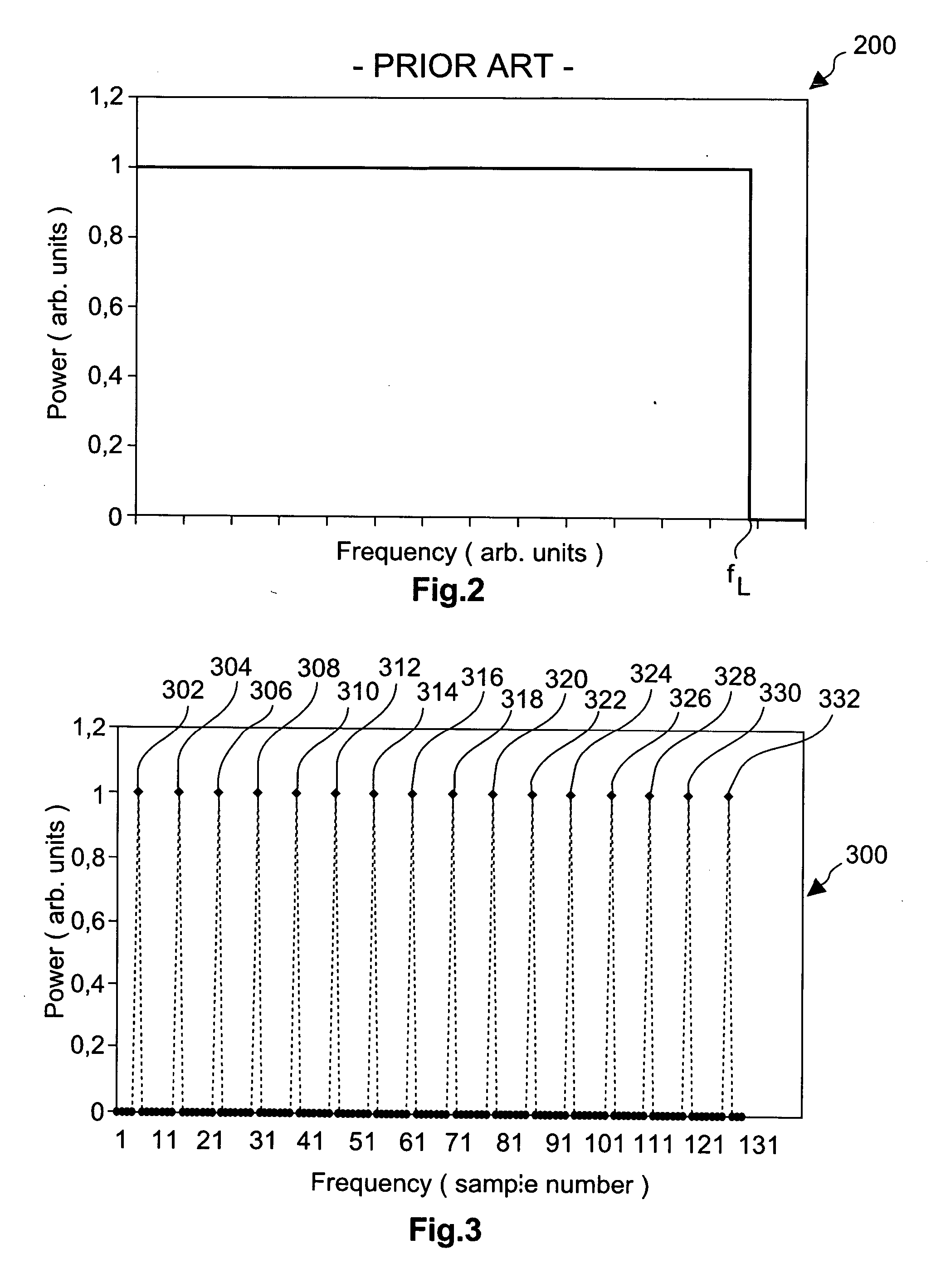Novel pilot sequences and structures with low peak-to-average power ratio
- Summary
- Abstract
- Description
- Claims
- Application Information
AI Technical Summary
Benefits of technology
Problems solved by technology
Method used
Image
Examples
Embodiment Construction
[0132]FIG. 1 shows a flow diagram of a method for generating a pilot signal sequence according to an embodiment of the invention. The procedure is started with step 100. At step 102, a carrier bandwidth parameter BW is received as an input. The carrier bandwidth influences the selection of a CAZAC sequence performed in step 106. At step 104 a code index is received as a further input value. At step 106, a CAZAC sequence of length m is selected from a stored set of CAZAC frequencies. The length m of the CAZAC frequency is the number of sequence elements. A sequence element of a CAZAC sequence is a symbol representing a complex number such as 1, −1, j, and −j. An example of a CAZAC sequence of length 16 is given in US 2005 / 0084030 A1 as:
[0133] 1,1,1,1,1,i,1,−i,−1,1,−i,−1,i.
[0134] Here, i refers to the well known imaginary unit number i, which in US 2005 / 0084030 A1 is denoted as “j”. In step 108, an n-point Fast Fourier transform is performed on the CAZAC sequence. A first frequency ...
PUM
 Login to View More
Login to View More Abstract
Description
Claims
Application Information
 Login to View More
Login to View More - R&D
- Intellectual Property
- Life Sciences
- Materials
- Tech Scout
- Unparalleled Data Quality
- Higher Quality Content
- 60% Fewer Hallucinations
Browse by: Latest US Patents, China's latest patents, Technical Efficacy Thesaurus, Application Domain, Technology Topic, Popular Technical Reports.
© 2025 PatSnap. All rights reserved.Legal|Privacy policy|Modern Slavery Act Transparency Statement|Sitemap|About US| Contact US: help@patsnap.com



